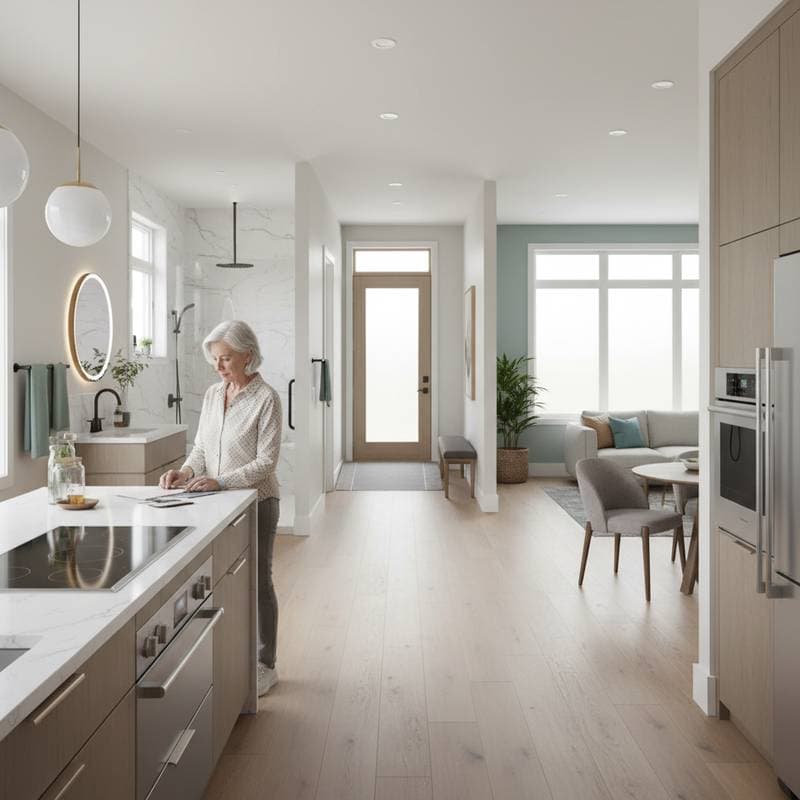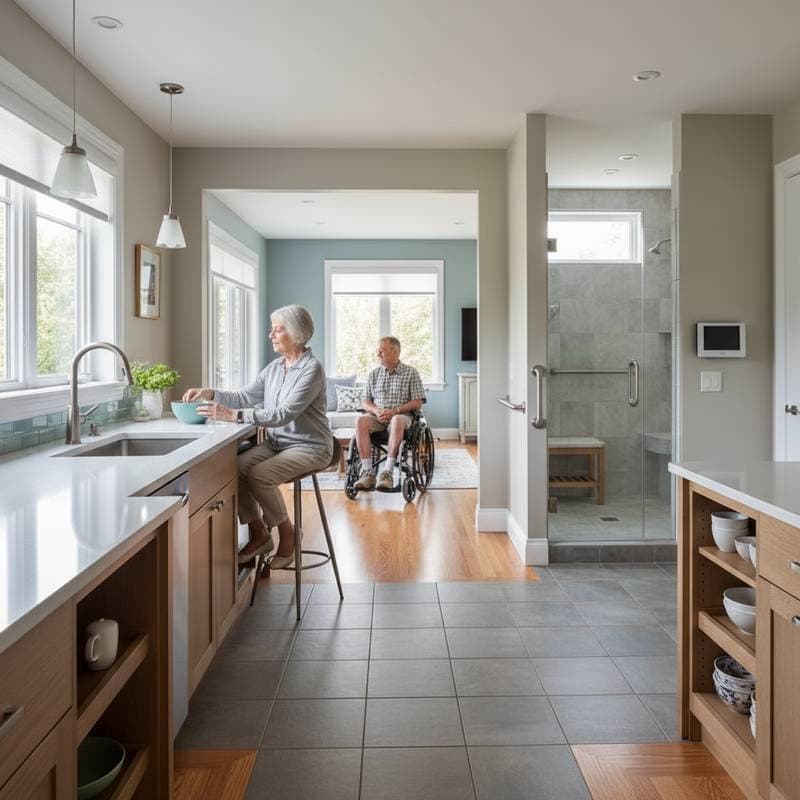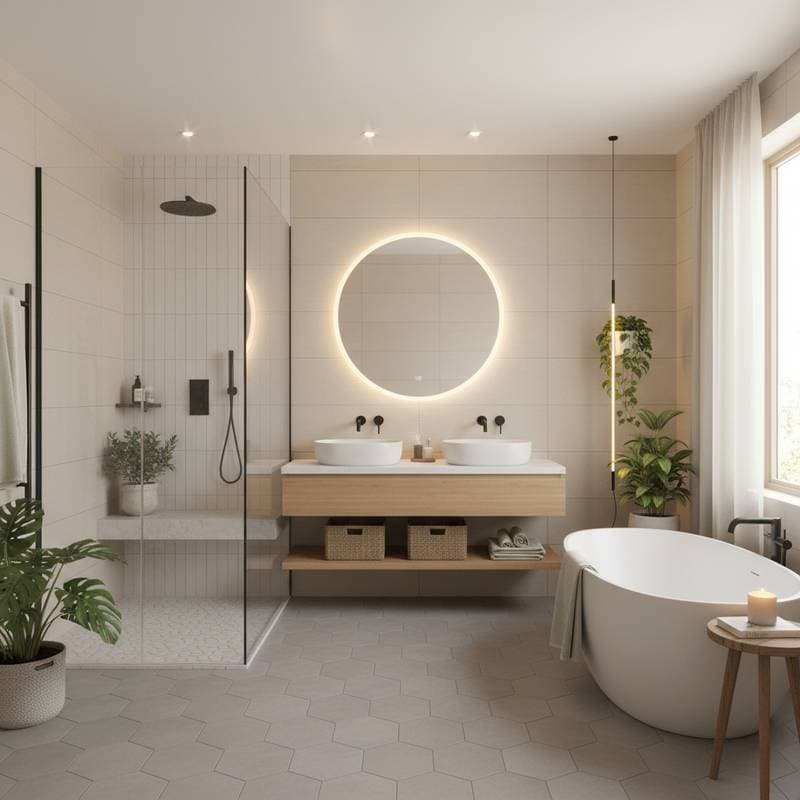Verification: Verify that essential items remain accessible without excessive reaching or stooping.
5. Refine Lighting and Control Mechanisms
Incorporate rocker-style switches or motion-activated sensors for effortless operation. Position light switches between 36 and 44 inches from the floor to align with typical reach heights.
- Swap traditional round doorknobs for lever-style handles that require less dexterity.
Verification: Ensure illumination distributes evenly and that controls function with a single hand and minimal effort.
6. Address Flooring and Transition Points
Eliminate loose area rugs and opt for low-pile carpeting or slip-resistant vinyl alternatives. Install beveled thresholds not exceeding half an inch in height to minimize trip hazards.
- Secure all flooring edges and seams to prevent curling or shifting.
Verification: Inspect that all surfaces align smoothly at transitions, free from abrupt changes in level.
7. Examine Electrical and HVAC Systems
Position thermostats, outlets, and switches at reachable heights, with thermostats no higher than 48 inches from the floor.
Electrical Caution: Relocating circuits necessitates professional intervention from a licensed electrician.
Verification: Confirm that all controls and access points support safe, comfortable operation.
Troubleshooting and Quality Assurance
Address common issues promptly to maintain project integrity.
- Instability in Grab Bars: Tighten fasteners into studs or deploy wall anchors designed for the specific material, ensuring load-bearing capacity.
- Irregular Flooring: Inspect the subfloor for levelness and apply underlayment as required before final surfacing.
- Plumbing Leaks: Examine connections for seepage immediately after restoring water flow and seal as needed.
- Inadequate Illumination: Integrate LED lighting options or upgrade to higher-wattage bulbs, respecting fixture specifications.
For persistent problems like uneven levels or ongoing leaks, seek guidance from a licensed contractor. Steer clear of temporary solutions such as adhesive-mounted bars or unanchored ramps, which compromise long-term safety.
Indicators for Professional Assistance
Engage a licensed contractor for tasks involving:
- Structural alterations, including doorway expansions or wall removals.
- Plumbing adjustments that introduce new drainage or supply lines.
- Electrical modifications, such as rewiring or GFCI implementations.
- Ramp or stairlift setups that demand precise load assessments.
Contractor rates generally fall between $75 and $150 per hour, varying by expertise and location. Obtain detailed written estimates, verify insurance coverage, and review local references prior to commitment. Insist on a contract that specifies materials, schedules, and warranty provisions.
Cost Breakdown and Financial Planning
Budget allocation varies by scope and materials selected.
- Grab bars and minor fixtures: $200 to $800.
- Bathroom overhaul featuring a walk-in shower: $8,000 to $20,000.
- Kitchen adaptations for accessibility: $5,000 to $15,000.
- Doorway expansions and ramp additions: $3,000 to $12,000.
- Complete universal design transformation: $30,000 to $80,000.
Factor in permitting fees, which can add 5 to 10 percent to totals, and consider financing options like home equity loans for larger investments. Prioritize high-impact areas to maximize return on expenditure while aligning with personal needs.
Sustaining Accessibility Over Time
Universal design modifications promote ongoing independence and reduce injury risks, simultaneously enhancing property appeal. Select robust, low-maintenance materials and prioritize expert execution for critical elements. Perform routine assessments, thorough cleanings, and incremental refinements to preserve functionality and security throughout life's phases.










